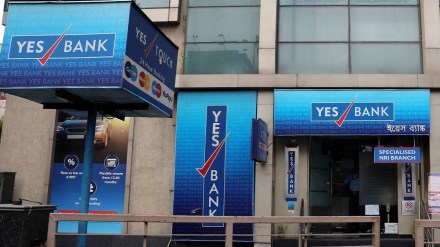Private sector lender YES Bank on Saturday reported over 4X year-on-year rise in its net profit for the quarter ended December at Rs 231 crore. The profit after tax for Q3FY24, however, was lower than a Bloomberg consensus estimate of Rs 367 crore.
In contrast to the industry trends, the bank registered higher deposit growth than credit during Q3. The lender’s overall deposits rose 13% year-on-year to `2.41 trillion as of December 31.
Low-cost current account and savings accounts (CASA) constituted 29.7% of the overall deposit book. Overall credit, meanwhile, grew 12% year-on-year to Rs 2.17 trillion during Q3. Retail advances accounted for Rs 1.03 trillion of the overall loans, whereas corporate loans constituted Rs 50,032 crore. Prashant Kumar, the bank’ MD & CEO, said in a post earnings conference that the banking industry continues to face challenges on deposit mobilisation and going ahead the bank’s strategy would be to grow granular deposits instead of certificate of deposits (CDs).
“We will see how we can grow our deposit base further to support a loan growth of 15% going forward,” he said. The lender’s credit-deposit (CD) ratio was at 90% during Q3 and the lender is comfortable with the current level of CD ratio to grow its advances.
Further, though the lender will be cautious on growing unsecured retail loans post hike in risk weights, the lender does not see it impacting overall loan growth. As deposits outpaced credit growth, net interest income (NII) grew at tepid pace of 2.3% year-on-year to Rs 2,017 crore during Q3.
Net interest margin (NIM), meanwhile, fell 10 basis points (bps) year-on-year to 2.4% during Q3. The hike in risk weight has led to 40 bps moderation in the bank’s capital adequacy ratio, as FE reported in December, but the lender will likely see 110-110 bps of incremental addition in its common-equity tier-I (CET-1) ratio post conversion of warrants.
The lender had in July 2022 raised $1.1 billion from Carlyle and Advent International through a combination of $640 million in equity shares, and $475 million through equity share warrants. As of December 31, the bank’s capital adequacy ratio stood at 16.3%.
Asset quality
YES Bank’s gross and net-non performing asset ratio (GNPA, NNPA) was largely flat during Q3 at 2% and 0.9% as on December 31, as against 2% and 1% a year ago, respectively.
Further, the lender’s total recoveries and upgrades stood at `1,361 crore during Q3. During 9MFY24, the lender’s overall recoveries and upgrades stood at `3,869 crore and by the end of March, the lender will likely surpass its target of `5,000 crore in recoveries and upgrades in FY24, Kumar said.
The Supreme Court will on January 29 hear the case filed against write-down of YES Bank’s additional tier-I (AT-1) bonds post its collapse in 2020. Kumar did not respond on whether the bank has made additional provisions for repaying AT-1 bond holders their share, in case of an adverse judgment by the apex court.
Lastly, the board of YES Bank, on Saturday, approved transfer of the investment and merchant banking business of its wholly-owned subsidiary YES Securities to the bank. The move is a strategic measure to “leverage opportunities and optimise growth within the group”, it said. YES Securities, has accordingly, also applied to market regulator Securities and Exchange Board of India (Sebi), to surrender its merchant banking licence as on January 11.
